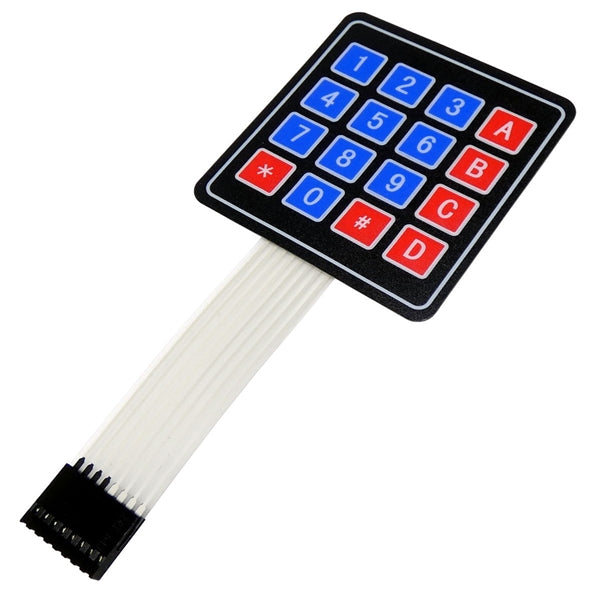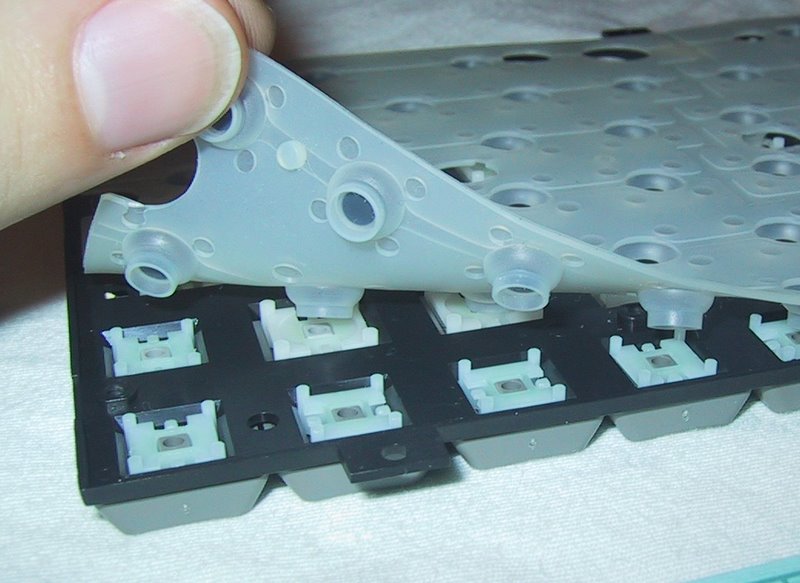Discover How Membrane Switches Feature and Their Role in Modern Electronics
Membrane Switches represent an advanced integration of modern technology and style within the realm of modern-day electronic devices, offering as necessary user interfaces in countless devices. Understanding the details of Membrane switch functionality and their broader effects in improving individual experience invites additional exploration right into their style, advantages, and the cutting-edge advancements shaping their future in modern technology.
What Are Membrane Buttons?

Membrane buttons are differentiated by their resilience and resistance to ecological factors, such as dust, moisture, and severe temperatures. They can be customized with numerous graphics, colors, and responsive feedback choices, boosting user experience while maintaining aesthetic appeal - membrane switches. The consolidation of published circuits enables for smooth integration right into tools, improving overall functionality.
The convenience of Membrane buttons appears in their ability to sustain both complex and straightforward control functions. They can incorporate functions such as LED signs and touch-sensitive innovation, dealing with specific user needs. As innovation remains to advance, Membrane Switches stay vital for making it possible for reliable and instinctive interface, thus playing a critical duty in the innovation of modern digital devices.
Parts of Membrane Buttons
Membrane switches are composed of a number of essential elements that interact to develop a reputable and practical interface. The key components include the visuals overlay, adhesive layer, spacer layer, and conductive traces.
The graphic overlay functions as the individual interface, normally published on a versatile substrate such as polyester or polycarbonate. This layer not just supplies visual allure yet likewise includes tactile feedback, aesthetic hints, and safety features. Underneath the graphic overlay lies the sticky layer, which protects the button to the tool and makes certain sturdiness versus environmental stress and anxieties.
The spacer layer is crucial for maintaining the needed gap in between the visuals overlay and the circuit layer. When pressure is used, this void allows for the activation of the switch. The conductive traces, generally made from silver or carbon, form the electrical pathways that complete the circuit when the button is engaged.
Furthermore, a backing layer may be included for structural assistance and insulation. These components work together flawlessly, making sure that Membrane buttons are both straightforward and resilient, making them indispensable in various modern electronic applications.
Exactly How Membrane Switches Job
Exactly how do Membrane Switches function effectively within electronic tools? Membrane Switches operate the principles of pressure-sensitive technology, making use of a layered building and construction that consists of visuals overlays, glue layers, and conductive components. When an individual uses pressure to the button, the leading layer warps, enabling the conductive components under to make call and finish an electric circuit. This action sets off the desired feature within the tool.
The style of Membrane buttons is crucial for their effective procedure (membrane switches). The layers are diligently engineered to offer responsive feedback, durability, and resistance to environmental aspects such as dampness and dirt. The incorporation of domes-- little, raised locations within the button-- enhances tactile feedback, supplying individuals with a recognizable click feeling upon activation
In addition, Membrane buttons can be customized in regards to size, form, and graphics, making them suitable for numerous applications. They are frequently made use of in control panels, clinical tools, and consumer electronic devices as a result of their streamlined layout and integrity. In general, the efficient performance of Membrane buttons is crucial in enhancing user interaction and guaranteeing seamless procedure in modern-day electronic gadgets.

Applications in Modern Instruments
Utilizing their one-of-a-kind layout and performance, Membrane buttons have actually ended up being integral parts in a wide variety of modern electronic gadgets. These versatile interfaces are utilized in website here customer electronic devices, commercial tools, medical devices, and automobile controls, supplying smooth customer communication.
In customer electronics, Membrane buttons are frequently discovered in appliances like microwaves, washing machines, and other home devices, where they enable user-friendly control with a sleek account. Their inconspicuous style promotes integration into small devices, improving aesthetic charm without compromising performance.
In commercial applications, Membrane Switches act as control board for equipment, offering resilience and resistance to rough atmospheres. Their capability to withstand moisture and impurities makes them perfect for usage in manufacturing and handling industries.
Clinical devices additionally gain from Membrane switches, which are designed to be simple to clean and keep, ensuring health in professional settings. They are frequently made use of in analysis devices, individual tracking systems, and portable clinical devices, where dependability is critical.
Benefits of Membrane Switches
Among the essential advantages of Membrane buttons is their convenience, which allows them to be tailored for a range of applications across several industries. These buttons can be developed in various forms and sizes, fitting unique item requirements while giving seamless integration right into devices. Their slim account makes it possible for a portable and smooth design, often boosting the aesthetic appeal of electronic items.
An additional significant advantage is their sturdiness - membrane switches. Membrane switches are typically resistant to dirt, wetness, and chemicals, making them optimal for severe environments. This strength expands their lifespan compared to conventional mechanical buttons, reducing the demand for constant substitutes
In addition, Membrane Switches deal cost-effectiveness. The manufacturing procedure entails printing innovations that minimize manufacturing costs, particularly for big runs. This affordability, incorporated with low maintenance demands, makes them an eye-catching option for suppliers.

Final Thought
To conclude, Membrane Switches stand for a significant innovation in interface innovation within contemporary electronic devices. Their split building, pressure-sensitive procedure, and flexibility to numerous applications emphasize their value across multiple markets. The longevity and environmental resistance of Membrane Switches additionally boost their appeal, making them a preferred option for manufacturers seeking customizable and reputable remedies. As the need for user-friendly and resilient user interfaces remains to grow, the duty of Membrane switches in forming user experience will certainly broaden.
Membrane Switches represent an innovative combination of technology and layout within the realm of contemporary electronic devices, Go Here offering as crucial interfaces in numerous tools.In the realm of contemporary electronics, Membrane Switches serve as vital parts that assist in customer interaction with devices. As innovation proceeds to advance, Membrane Switches stay necessary for making it possible for efficient and instinctive user interfaces, thereby playing a critical function in the advancement of modern-day digital gadgets.
Just how do Membrane Switches function effectively within electronic devices? On Homepage the whole, the effective functioning of Membrane switches is essential in boosting individual interaction and ensuring smooth operation in contemporary digital devices.